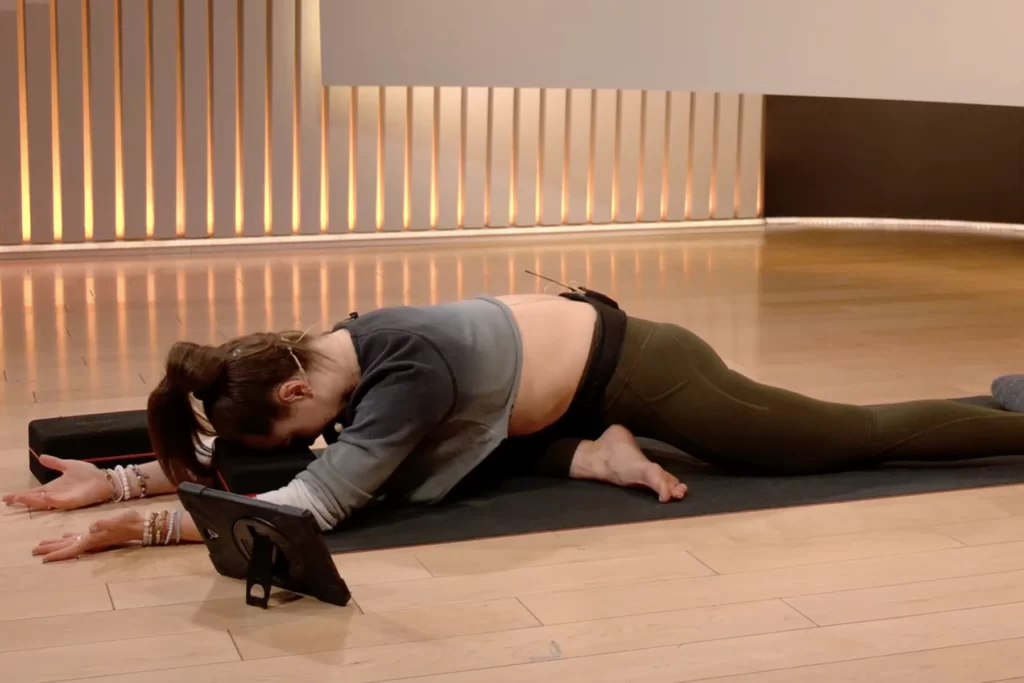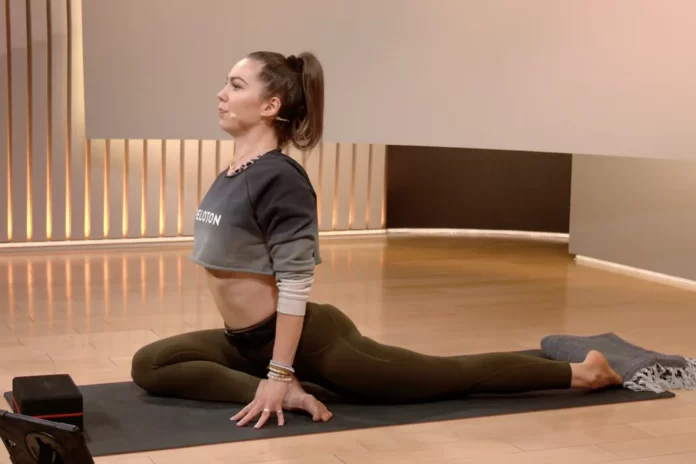Sitting for extended periods can lead to discomfort and stiffness, especially in the hips and lower back. One effective stretch to alleviate these issues is the elevated pigeon stretch. Here’s how this simple yet impactful stretch can provide relief:
Elevated Pigeon Stretch: A Quick Guide for Relief
- Find a Stable Surface: Locate a stable and elevated surface, such as a bench or table, that is roughly knee height. This will serve as the platform for the stretch.
- Assume the Pigeon Position: Begin by standing facing the chosen surface. Lift your right leg and place the outer side of your right ankle on the elevated surface, ensuring your shin is parallel to the surface.
- Adjust Your Distance: Move your left foot back, creating a comfortable distance between your legs. The goal is to find a position that allows your hips to square forward.
- Hinge at the Hips: With a straight back, hinge at your hips and lean forward over your right leg. Keep your spine aligned and reach as far as comfortable. You should feel a deep stretch in your right hip and glutes.
- Hold and Breathe: Hold the stretch for 15-30 seconds, focusing on deep and steady breaths. Relax into the stretch, allowing your muscles to release tension.
- Switch Sides: Return to a standing position and switch to the left leg, repeating the same process. Ensure symmetry in the stretch to address both sides equally.
Benefits of the Elevated Pigeon Stretch:
- Hip Flexor Release: The stretch targets the hip flexors, addressing tightness often associated with prolonged sitting.
- Improved Flexibility: Regular practice enhances hip flexibility, contributing to overall mobility.
- Lower Back Relief: The stretch can alleviate tension in the lower back, a common issue for those with sedentary lifestyles.
- Enhanced Blood Flow: The forward-leaning position promotes blood flow to the stretched muscles, aiding in recovery.
Incorporating the elevated pigeon stretch into your routine, especially after prolonged sitting, can provide relief and contribute to improved flexibility. Remember to perform the stretch gently, respecting your body’s limits. If you have existing health concerns, consult with a healthcare professional or a fitness expert before introducing new stretches to your routine.
Elevated Pigeon Stretch: Unlocking Relief for Sedentary Woes
Sitting for extended periods has become a common part of modern life, leading to various discomforts, especially in the hips and lower back. The elevated pigeon stretch emerges as a simple yet effective solution to counteract the negative effects of prolonged sitting.

This stretch is easily accessible and can be incorporated into your routine with minimal equipment. By following a few straightforward steps, you can enjoy the benefits of increased flexibility, reduced tension, and improved overall well-being.
Understanding the Technique:
The elevated pigeon stretch begins by finding a stable surface at knee height, such as a bench or table. The stretch primarily targets the hip flexors, which can become tight and restricted with prolonged sitting.

As you assume the pigeon position, with one leg elevated on the chosen surface, you’ll feel a deep stretch in the hip and glute muscles. The key is to hinge at the hips and maintain a straight back while leaning forward. This ensures the stretch is focused on the intended muscle groups.
Adding Duration and Consistency:
Hold the stretch for 15-30 seconds on each side, allowing your muscles to gradually release tension. Consistency is key; incorporating the elevated pigeon stretch into your daily routine can contribute to lasting benefits.
Benefits Beyond Flexibility:
- Hip Flexor Release: The stretch specifically targets the hip flexors, addressing tightness associated with prolonged sitting.
- Lower Back Relief: Many individuals experience tension in the lower back due to sedentary habits. The elevated pigeon stretch can alleviate this discomfort.
- Improved Blood Flow: The forward-leaning position encourages blood flow to the stretched muscles, promoting recovery and reducing stiffness.

